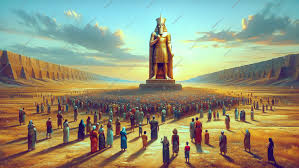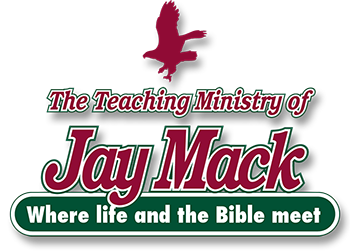Nebuchadnezzar’s Statue of Gold and the Fiery Furnace
3: 1-30

After conquering Jerusalem (see Jeremiah, to see link click Gb – The Destruction of Solomon’s Temple on Tisha B’Av in 586 BC), Nebuchadnezzar had set up a golden statue. That victory made him believe that he was supreme in his power and could defy the God whose City and Temple he had destroyed. The setting of the conflict with Shadrach (Hananiah), Meshach (Mishael) and Abednego (Azariah) is the plain of Dura, located a few miles south of the city of Babylon. King Nebuchadnezzar made a statue of gold and set it up. These words echo through the first half of the chapter in verses 1-18. The statue was intended to be worshipped, but the writer does not call it a god. The fact that all peoples, nations, and languages were to fall down and worship it suggests that Nebuchadnezzar intended to unite his kingdom under one religion. The statue probably represented himself. Having been told that he was the head of gold (see the commentary on Ay – The First Empire: A Head of Gold), what more natural than to capitalize on the fact and to make the whole statue gold?
The size and shape of the statue are both remarkable. It was as high as the date-palms that still grow in the plains of Iraq, and it was a slender nine feet in diameter. It must have been more like an obelisk than a statue, and made out to resemble a man. The writer, however, is not interested in such details, but rather in the ideology it stood for and to which he could not condone. The incident represents the conflict between the worship of the true God and the humanistic use of religion to boost the power of the rulers of this world. It is typical of idolatry that the idol is used by the worshipper to achieve his ends. Nebuchadnezzar couldn’t see any reason but defiance for refusal to worship himself as requested, and therefore did not hesitate to demand the brutal punishment of the fiery furnace.
Death by burning at the hands of Nebuchadnezzar is recorded in Jeremiah 29:22, and a directive of the ruler Rim Sin (1750 BC) of Larsa, “Because they threw a young slave into an oven, you throw a slave into a furnace,” proves that the idea did not originate with the Babylonian king. Therefore, there is nothing improbable about the story until it comes to the miraculous intervention by which the lives of the three men were saved and a fourth accompanied them in the furnace.115
Some commentators regard this chapter as a kind of allegory rather than as a historical event. However, if that were true, then the corresponding biblical account of the bravery of the three Jewish men in the fiery furnace, joined by the Son of Man, would also be allegorical. Then where does it stop? Is the preincarnate Messiah in the fiery furnace really allegorical? Critics of the Bible have been discounting the miracles in God’s Word forever, allegorizing its literal history out of existence; hence, attacking the miraculous God that we worship. No, what we have before us in chapter 3 verses 1-30 is historical fact, just as all the other miracles in the Bible are literal events. Faith comes by hearing, that is, hearing the Good News about Yeshua Messiah (Romans 10:17).
This chapter, verses 1 through 30 can be broken down in chiastic fashion, resulting in a mirror effect as the ideas are “reflected” back in the passage: A to A, B to B, C to C, with D being the climax of the chiasm.
A. Nebuchadnezzar’s Decree to Worship the Statue – 3:1-7 (Bl)
B. The Accusation Against the Jews – 3:8-12 (Bm)
C. Dani’el’s Friends Questioned – 3:13-15 (Bn)
D. The Jews Confess Their Faith – 3:16-18 (Bo)
C. Dani’el’s Friends Punished – 3:19-23 (Bp)
B. The Vindication of the Jews – 3:24-27 (Bq)
A. Nebuchadnezzar’s Decree Honoring the Jews and Their God – 3:28-30 (Br)



Leave A Comment